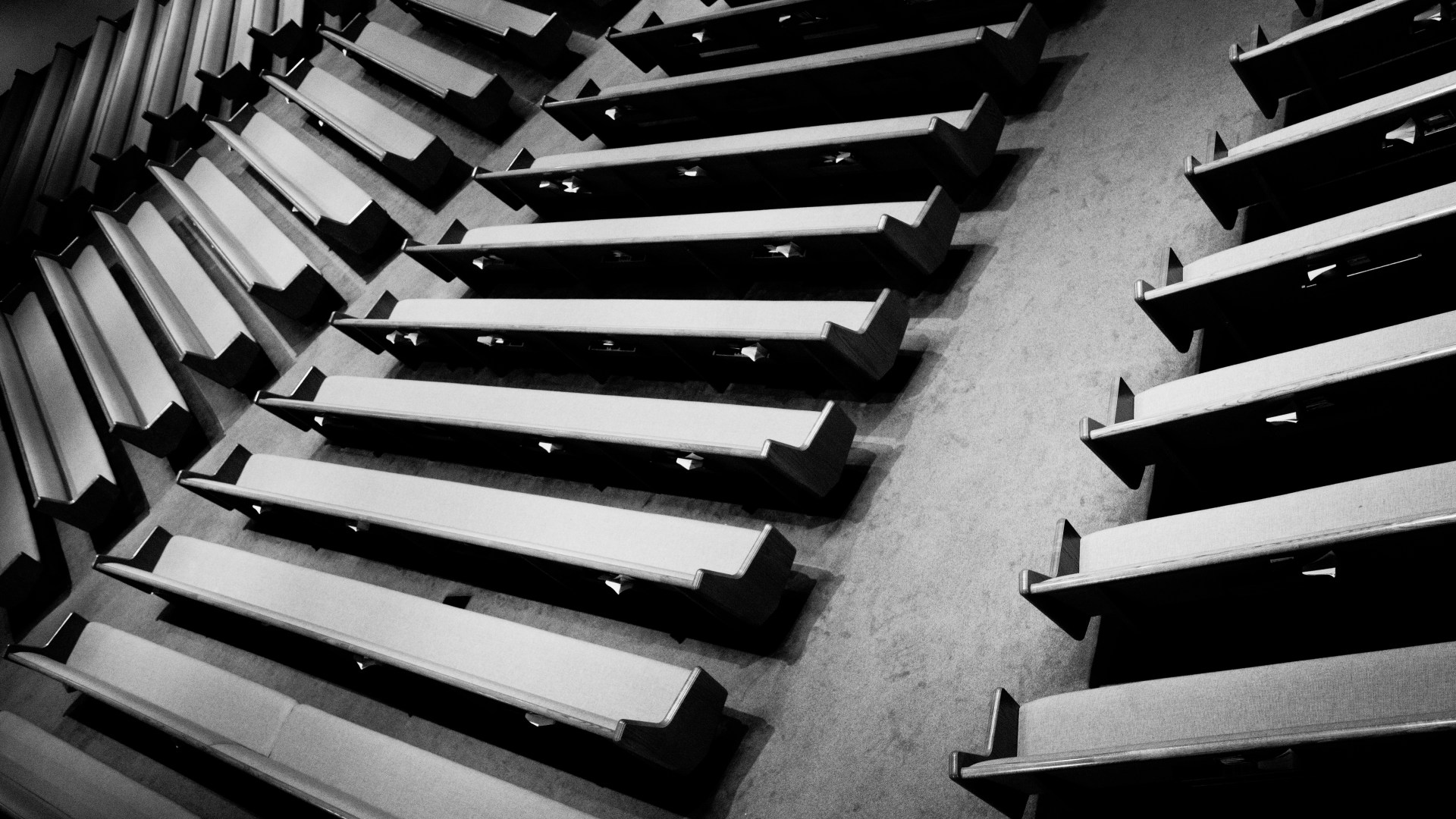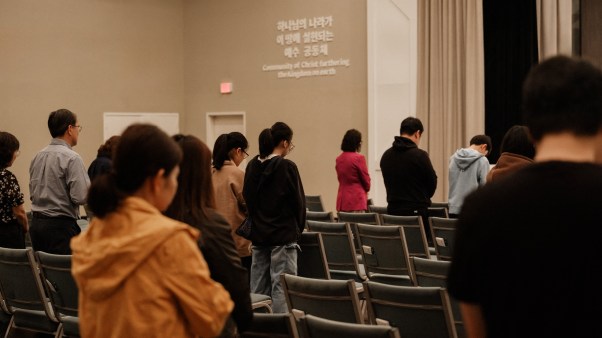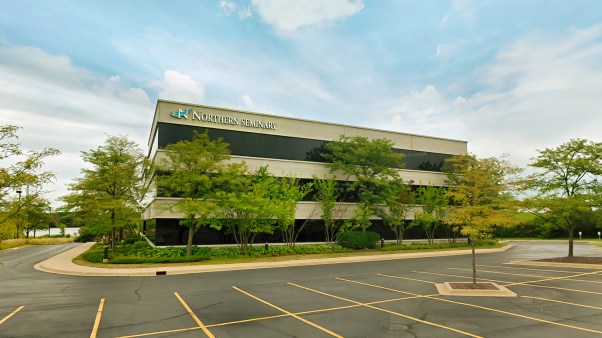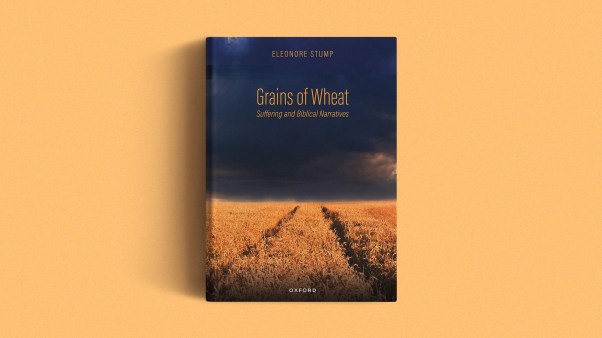Five hundred years on, some observers are wondering whether the nail Luther used to post his 95 Theses on the Wittenberg door was a harbinger of a final nail in the coffin of Protestantism. In light of the many divisions in the church in the wake of the Reformation, do we truly have cause to celebrate? Should we mourn? Should we shrug off our divisions as the price to pay for truth?
This anniversary year gives us the opportunity to honor the legacy of the Reformation. We do so best not by whitewashing its imperfections but by retrieving its unitive spirit—in particular, the Reformers’ original vision for catholic unity under biblical authority.
The rationale
Jerry Walls, professor of philosophy at Houston Baptist University, had something like this in mind when, in January, he sent an email to me and others who were using terms like “mere Protestant Christianity” and “Reformed catholicity.” Walls and Ken Collins had just written Roman but Not Catholic, arguing Protestants are catholic too by virtue of identifying with the one true church down through the centuries, as well as with its great tradition.
Evangelicals yearning for the ancient catholic faith need not cross the Tiber. Indeed, Roman-centricity falls short of true catholicity in suggesting that Protestant churches are defective, despite the Reformers’ affirmation of creedal Christianity. Protestant catholicity is bounded only by the supreme authority of Scripture: hence not Roman, but Reforming catholicity.
A Protestant is first and foremost “one who publicly professes” (from the Latin pro and testare). The solas are shouts of praise as well as protest. What protests the Reformers made served the positive purpose of bearing witness to the truth of the gospel they had recovered in Scripture. Instead of reforming the one true catholic church, however, Protestants soon found themselves cut off from Rome. What they protested was not catholicity but Rome’s undue narrowing of the notion. Indeed, the historian Philip Schaff declared the Reformation to be the “greatest act” of the catholic church.
To prove it, we have drawn up a confession that celebrates the Reformation by returning to its agenda of pursuing a biblical catholicity. We hope to prove the critics wrong by showing that, despite our differences, Protestants in fact agree on a sizeable body of substantial doctrinal claims.
We do so out of a conviction that Jesus is calling his church today to be both Protestant and catholic. Protestant principle belongs with catholic substance. That is, justification by grace through faith according to the supremely authoritative Scriptures belongs with the creedal heritage of the early and medieval churches.
The process
I knew Walls only by reputation, as the author of a book whose subtitle, “The heart of what is wrong with Calvinism,” hit my Reformed funny bone. After a few emails, he asked me to serve as co-chair of a drafting committee and, eventually, to write the rough draft. His reaching across the aisle was a welcome and impressive gesture of theological bipartisanship. Fittingly enough, the catholic unity to which we both wanted to bear witness began despite our initial theological differences.
We started with nothing. We had no institutional backing, no obvious constituency, and no budget. We could not call a church council, but we assembled a drafting committee of Protestant theologians representing a variety of confessional traditions, including Baptist, Free Church, Methodist, Lutheran, Presbyterian, Anglican, and Pentecostal.
Meanwhile, David Dockery, president of Trinity International University and a Baptist with catholic sensibility, lent us crucial support and advice. We received additional support from our steering committee co-chairs: Timothy George, dean of Beeson Divinity School, and Timothy Tennent, president of Asbury Theological Seminary, affectionately known as “1 and 2 Timothy.”
By April we had a first draft, and the drafting committee went to work, quickly producing 30 single-spaced pages of response to our initial 9-page document. I’d been in theological discussions before, but this one felt different. Although all the members of the drafting committee had concerns, their comments consistently aimed at constructive resolutions.
Baptists, Lutherans, and Pentecostals worked together to find just the right wording for historically fraught issues that all could agree on. It was a delight to realize that the process of formulating the confession resembled the very thing we were trying to describe in our confession, namely, how we can agree on theological essentials even if none of us got to say everything we wanted to say in the way we wanted to say it.
By mid-June we had a second draft that reflected significant input from a variety of denominational voices, and by July we were finalizing the draft and discussing its release.
The hope
Rome wasn’t built in a day, and Protestant catholicity won’t be either. What, then, do we hope to achieve with this confession? We are not proposing to start a new church or to replace the confessions of other churches. Nor are we claiming that Protestants have a monopoly on catholicity or truth. Conversations with Roman Catholics and Orthodox Christians remain important as we seek to live out the unity of the church, but this is not our focus here.
Our aim is more modest, but of the utmost importance for those who consider themselves heirs of the Reformation: to show that a biblically normed, catholic unity-in-diversity is a substantial theological reality. Timothy George may have said it best: “This confession is not a test of fellowship but rather an opportunity for witness.” Our deepest desire is to retrieve a Protestant catholicity for the sake of the whole church. Here we stand.
Kevin J. Vanhoozer is research professor of systematic theology at Trinity Evangelical Divinity School.
The Reforming Catholic Confession
A “Mere Protestant” statement of faith to mark the 500th anniversary of the Reformation
What we, protestants of diverse churches and theological traditions, say together
We believe…
Triune God
That there is one God, infinitely great and good, the creator and sustainer of all things visible and invisible, the one true source of light and life, who has life in himself and lives eternally in glorious light and sovereign love in three persons—Father, Son, and Holy Spirit (Matt. 28:19; 2 Cor. 13:14)—co-equal in nature, majesty, and glory. Everything God does in creating, sustaining, judging, and redeeming the world reflects who God is, the one whose perfections, including love, holiness, knowledge, wisdom, power, and righteousness, have been revealed in the history of salvation. God has freely purposed from before the foundation of the world to elect and form a people for himself to be his treasured possession (Deut. 7:6), to the praise of his glory (Eph. 1:3–14).
Holy Scripture
That God has spoken and continues to speak in and through Scripture, the only infallible and sufficiently clear rule and authority for Christian faith, thought, and life (sola scriptura). Scripture is God’s inspired and illuminating Word in the words of his servants (Ps. 119:105), the prophets and apostles, a gracious self-communication of God’s own light and life, a means of grace for growing in knowledge and holiness. The Bible is to be believed in all that it teaches, obeyed in all that it commands, trusted in all that it promises, and revered in all that it reveals (2 Tim 3:16).
Human Beings
That God communicates his goodness to all creatures, but in particular to human beings, whom he has made in his own image, both male and female (Gen. 1:26–27), and accordingly that all men, women, and children have been graciously bestowed with inherent dignity (rights) and creaturely vocation (responsibilities).
Fallenness
That the original goodness of creation and the human creature has been corrupted by sin, namely, the self-defeating choice of the first human beings to deny the Creator and the created order by going their own way, breaking God’s law for life (Rom. 3:23). Through disobedience to the law-giver, Adam and Eve incurred disorder instead of order (Rom. 8:20–21), divine condemnation instead of approval, and death instead of life for themselves and their descendants (Ps. 51:5; Rom. 5:12–20).
Jesus Christ
That Jesus Christ is the eternal Son of God become human for us and our salvation (John 3:17), the only Mediator (solus Christus) between God and humanity (1 Tim. 2:5), born of the virgin Mary, the Son of David and servant of the house of Israel (Rom. 1:3; 15:8), one person with two natures, truly God and truly man. He lived a fully human life, having entered into the disorder and brokenness of fallen existence, yet without sin, and in his words, deeds, attitude, and suffering embodied the free and loving communication of God’s own light (truth) and life (salvation).
The Atoning Work of Christ
That God who is rich in mercy towards the undeserving has made gracious provision for human wrongdoing, corruption, and guilt, provisionally and typologically through Israel’s Temple and sin offerings, then definitively and gloriously in the gift of Jesus’ once-for-all sufficient and perfect sacrificial death on the cross (Rom. 6:10; 1 Pet. 3:18) in the temple of his human flesh (Heb. 10:11–12). By his death in our stead, he revealed God’s love and upheld God’s justice, removing our guilt, vanquishing the powers that held us captive, and reconciling us to God (Isa. 53:4-6; 2 Cor. 5:21; Col. 2:14–15). It is wholly by grace (sola gratia), not our own works or merits, that we have been forgiven; it is wholly by Jesus’ shed blood, not by our own sweat and tears, that we have been cleansed.
The Gospel
That the gospel is the good news that the triune God has poured out his grace in the life, death, resurrection, and ascension of his Son, the Lord Jesus Christ, so that through his work we might have peace with God (Rom. 5:1). Jesus lived in perfect obedience yet suffered everything sinners deserved so that sinners would not have to pursue a righteousness of their own, relying on their own works, but rather through trust in him as the fulfillment of God’s promises could be justified by faith alone (sola fide) in order to become fellow heirs with him. Christ died in the place of sinners, absorbing the wages of sin (Rom. 6:23), so that those who entrust themselves to him also die with him to the power, penalty, and (eventually) practice of sin. Christ was raised the firstborn of a renewed and restored creation, so that those whom the Spirit unites to him in faith are raised up and created a new humanity in him (Eph. 2:15). Renewed in God’s image, they are thereby enabled to live out his life in them. One with Christ and made alive in him who is the only ground of salvation, sinners are reconciled with God—justified, adopted, sanctified, and eventually glorified children of the promise.
The Person and Work of the Holy Spirit
That the Holy Spirit is the third person of the Trinity, the unseen yet active personal presence of God in the world, who unites believers to Christ, regenerating and making them new creatures (Titus 3:5) with hearts oriented to the light and life of the kingdom of God and to peace and justice on earth. The Spirit indwells those whom he makes alive with Christ, through faith incorporates them into the body of Christ, and conforms them to the image of Christ so that they may glorify him as they grow in knowledge, wisdom, and love into mature sainthood, the measure of the stature of the fullness of Christ (Eph. 4:13). The Spirit is the light of truth and fire of love who continues to sanctify the people of God, prompting them to repentance and faith, diversifying their gifts, directing their witness, and empowering their discipleship.
The Church
That the one, holy, catholic, and apostolic church is God’s new society, the first fruit of the new creation, the whole company of the redeemed through the ages, of which Christ is Lord and head. The truth that Jesus is the Christ, the Son of the living God, is the church’s firm foundation (Matt. 16:16–18; 1 Cor. 3:11). The local church is both embassy and parable of the kingdom of heaven, an earthly place where his will is done and he is now present, existing visibly everywhere two or three gather in his name to proclaim and spread the gospel in word and works of love, and by obeying the Lord’s command to baptize disciples (Matt. 28:19) and celebrate the Lord’s Supper (Luke 22:19).
Baptism and Lord’s Supper
That these two ordinances, baptism and the Lord’s Supper, which some among us call “sacraments,” are bound to the Word by the Spirit as visible words proclaiming the promise of the gospel, and thus become places where recipients encounter the Word again. Baptism and the Lord’s Supper communicate life in Christ to the faithful, confirming them in their assurance that Christ, the gift of God for the people of God, is indeed “for us and our salvation” and nurturing them in their faith. Baptism and the Lord’s Supper are physical focal points for key Reformation insights: the gifts of God (sola gratia) and the faith that grasps their promise (sola fide). They are tangible expressions of the gospel insofar as they vividly depict our dying, rising, and incorporation into Jesus’ body (“one bread . . . one body”—1 Cor. 10:16–17), truly presenting Christ and the reconciliation he achieved on the cross. Baptism and the Lord’s Supper strengthen the faithful by visibly recalling, proclaiming, and sealing the gracious promise of forgiveness of sins and communion with God and one another through the peace-making blood of Christ (1 Cor. 11:26; Col. 1:20).
Holy Living
That through participating in baptism and the Lord’s Supper, as well as prayer, the ministry of the Word, and other forms of corporate worship, we grow into our new reality as God’s people, a holy nation (1 Pet. 2:9, 10), called to put on Christ through his indwelling Spirit. It is through the Spirit’s enlivening power that we live in imitation of Christ as his disciples, individually and corporately, a royal priesthood that proclaims his excellent deeds and offers our bodies as spiritual sacrifices in right worship of God and sacrificial service to the world through works of love, compassion for the poor, and justice for the oppressed, always, everywhere and to everyone bearing wise witness to the way, truth, and life of Jesus Christ.
Last Things
That in God’s own time and way, the bodily risen and ascended Christ will visibly return to consummate God’s purpose for the whole cosmos through his victory over death and the devil (1 Cor. 15:26). He will judge the world, consigning any who persist in unbelief to an everlasting fate apart from him, where his life and light are no more. Yet he will prepare his people as a bride for the marriage supper of the Lamb (Rev. 19:7–9), giving rest to restless hearts and life to glorified bodies (1 Cor. 15:42–44; Phil. 3:21) as they exult in joyful fellowship with their Lord and delight in the new heaven and the new earth (Rev. 21:1–2). There they shall reign with him (2 Tim. 2:12; Rev. 22:5) and see him face to face (1 Cor. 13:12; Rev. 22:4), forever rapt in wonder, love, and praise.
Soli Deo Gloria!
To read the full text of the confession with a historical and theological explanation, or to add your name to the list of signatories, visit reformingcatholicconfession.com.
Steering Committee:
Timothy C. Tennent* Barry H. Corey David S. Dockery Timothy F. George* Sandra C. Gray Jung-Sook Lee J. Steven O’Malley Samuel Rodriguez Robert B. Sloan Ed Stetzer
* committee co-chair
Drafting Committee:
Gwenfair Adams Gregg Allison David Buschart Kenneth J. Collins Dale M. Coulter Erik H. Herrmann Archbishop Peter Jensen Beth Felker Jones Kelly M. Kapic Samuel Waje Kunhiyop Frank Macchia Richard J. Mouw Fred Sanders Douglas A. Sweeney Natee Tanchanpongs Kevin J. Vanhoozer* Jerry L. Walls* Malcolm B. Yarnell III
* committee co-chair










